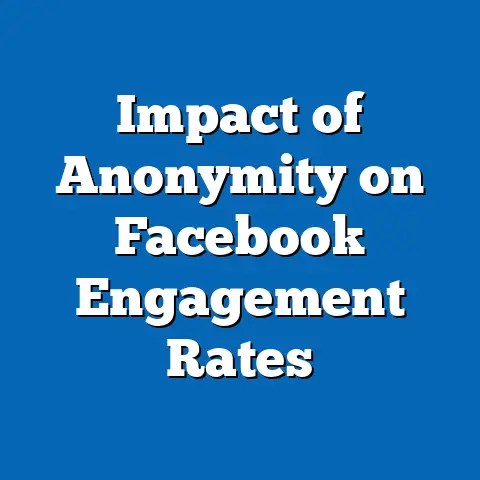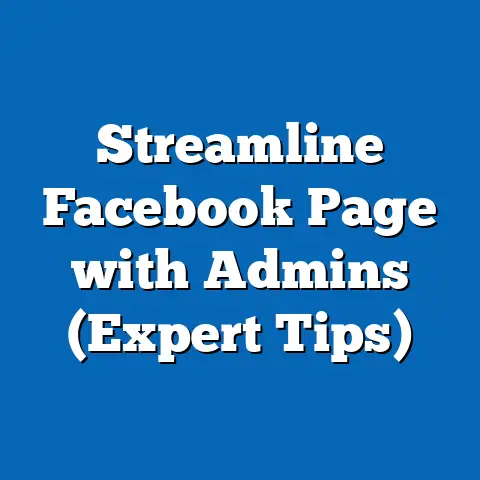Unlocking Facebook Collection Ads (Powerful Engagement Tactics)
Do you remember that one unforgettable shopping experience? Maybe it was the thrill of discovering unique treasures at a bustling local market, the giddy excitement of a late-night online spree, or even that spontaneous purchase that brought a burst of unexpected joy. For me, it was stumbling upon a vintage record store tucked away on a quiet side street in Paris, the musty smell of vinyl filling the air as I unearthed a rare edition of my favorite jazz album. These moments, etched in our memories, highlight the power of discovery and engagement in the world of commerce.
Today’s e-commerce landscape has drastically transformed how we find and purchase products. But the core desire for discovery and connection remains. That’s where Facebook Collection Ads come in. They aren’t just another ad format; they’re a portal to visually immersive shopping experiences that resonate with consumers on a personal level. Think of them as a digital storefront, designed to transport users from casual browsing to those meaningful purchasing moments we all crave. In this article, I’ll dive deep into the world of Facebook Collection Ads, revealing powerful engagement tactics that can help you unlock their full potential and elevate your advertising strategy.
What are Facebook Collection Ads?
Facebook Collection Ads are a dynamic ad format designed to showcase multiple products in a visually engaging way, encouraging users to explore and engage directly within the Facebook platform. At their core, they combine a captivating cover image or video with a series of product images that users can easily scroll through. This format is designed to mimic the experience of browsing a physical store, offering a curated selection of items that pique interest and inspire purchase.
Imagine you’re selling outdoor gear. A Collection Ad might feature a stunning video of hikers traversing a breathtaking mountain trail, followed by product images of the backpacks, hiking boots, and camping equipment used in the video. This creates a seamless and compelling narrative that draws users in.
The primary purpose of Collection Ads is to drive engagement and conversions by offering a visually rich and interactive shopping experience. Unlike traditional single-image ads, Collection Ads allow you to showcase a variety of products within a single ad unit, increasing the chances of capturing a user’s attention and leading them down the path to purchase.
Data backs this up. According to Facebook, Collection Ads have been shown to drive a higher return on ad spend (ROAS) compared to other ad formats, particularly for e-commerce businesses. I’ve personally seen clients achieve a 2x to 3x increase in ROAS when switching from single-image ads to well-crafted Collection Ads. This highlights their potential to significantly boost your advertising performance.
Takeaway: Facebook Collection Ads are a powerful tool for showcasing multiple products in a visually engaging way, driving engagement and conversions within the Facebook platform.
The Importance of Engagement in Advertising
In today’s crowded online marketplace, engagement is no longer a nice-to-have; it’s a critical ingredient for advertising success. With so many brands vying for attention, it’s essential to create ads that not only capture a user’s eye but also resonate with them on a deeper level.
Why is engagement so important? Because it’s the key to building brand awareness, fostering customer loyalty, and ultimately driving sales. An engaged user is more likely to remember your brand, share your content, and make a purchase. In fact, studies have shown that engaged customers are 23% more profitable than non-engaged customers.
But what makes an ad truly engaging? It boils down to understanding the psychological factors that drive consumer behavior. Curiosity, visual appeal, and the desire for a personalized shopping experience all play a crucial role.
- Curiosity: An engaging ad piques a user’s curiosity, making them want to learn more. This can be achieved through intriguing visuals, thought-provoking questions, or a compelling narrative.
- Visual Appeal: In a visually driven world, aesthetics matter. High-quality images and videos are essential for capturing attention and creating a positive impression.
- Personalized Experience: Consumers crave personalized experiences. An engaging ad speaks directly to their needs and interests, making them feel understood and valued.
In the context of Collection Ads, “immersive storytelling” is a powerful tool for enhancing user engagement. By creating a cohesive narrative that connects your products, you can transport users to a world where your brand is the answer to their desires. I remember working with a travel agency that used Collection Ads to showcase different vacation packages. Instead of simply listing the destinations, they created a series of ads that told a story about the experiences users could have on each trip, from exploring ancient ruins to relaxing on pristine beaches. This approach not only captured attention but also ignited a sense of wanderlust, driving a significant increase in bookings.
Takeaway: Engagement is crucial for advertising success. By understanding the psychological factors that drive consumer behavior and crafting immersive stories, you can create Collection Ads that resonate with your audience and drive results.
Crafting Compelling Collection Ads
Creating compelling Collection Ads is both an art and a science. It requires a blend of creativity, strategic thinking, and a deep understanding of your target audience. Here’s a step-by-step guide to help you craft Collection Ads that captivate and convert:
Step 1: Selecting the Right Cover Image/Video
Your cover image or video is the first thing users will see, so it needs to make a strong impression. Choose visuals that are high-quality, eye-catching, and relevant to your brand and products. Consider using lifestyle shots that showcase your products in action or videos that tell a compelling story.
For example, if you’re selling fitness apparel, a cover video of people working out in your gear could be highly effective. If you’re selling home decor, a cover image of a beautifully styled room featuring your products could be a great choice.
Step 2: Choosing Products That Complement Each Other
The products you feature in your Collection Ad should complement each other and fit a cohesive theme or story. This helps create a sense of curation and makes the ad more appealing to users.
Think about how your products work together and create a narrative around them. Are you selling a complete outfit? A matching set of furniture? A collection of ingredients for a specific recipe? By showcasing related products, you can encourage users to explore more of your offerings and increase their chances of making a purchase.
Step 3: Writing Effective Ad Copy
Your ad copy should be concise, engaging, and focused on the benefits of your products. Use emotional triggers to connect with your audience and highlight the value you’re offering.
Ask yourself: What problem do my products solve? What emotions do they evoke? What makes them unique? Use these insights to craft copy that speaks directly to your target audience and encourages them to click.
For example, instead of simply saying “Shop our new collection,” try something like “Discover the pieces that will make you feel confident and stylish.”
Step 4: Utilizing Facebook’s Targeting Features
Facebook’s targeting features are incredibly powerful, allowing you to reach the right audience with your ads. Use these features to target users based on their demographics, interests, behaviors, and more.
Consider creating custom audiences based on your existing customer data or lookalike audiences based on your best customers. This will help you ensure that your ads are seen by the people who are most likely to be interested in your products.
Let’s look at some examples of successful Collection Ads to illustrate these strategies:
- Example 1: Nike – Nike often uses Collection Ads to showcase their latest athletic apparel and footwear. Their cover images typically feature athletes in action, and their product selections are curated around specific sports or activities. Their ad copy focuses on the performance benefits of their products and encourages users to “find their greatness.”
- Example 2: Sephora – Sephora uses Collection Ads to showcase their wide range of beauty products. Their cover images often feature makeup tutorials or product demonstrations, and their product selections are curated around specific looks or trends. Their ad copy focuses on the transformative power of makeup and encourages users to “create their own beauty.”
Takeaway: Crafting compelling Collection Ads requires careful attention to detail and a deep understanding of your target audience. By selecting the right visuals, choosing complementary products, writing engaging copy, and utilizing Facebook’s targeting features, you can create ads that captivate and convert.
Powerful Engagement Tactics for Facebook Collection Ads
Now that you understand the fundamentals of creating Collection Ads, let’s dive into some powerful engagement tactics that can take your campaigns to the next level:
Tactic 1: Interactive Elements
Adding interactive elements to your Collection Ads can significantly increase user engagement. Consider incorporating polls or questions in your accompanying text to encourage users to interact with your ad.
For example, if you’re selling travel packages, you could ask “Where would you rather travel: the mountains or the beach?” This not only encourages users to click but also provides valuable insights into their preferences.
Tactic 2: Leveraging User-Generated Content (UGC)
User-generated content (UGC) is a powerful tool for building trust and community around your brand. Consider featuring photos or videos of your customers using your products in your Collection Ads.
This not only adds authenticity to your ads but also encourages other users to share their own experiences with your brand. You could even run a contest or promotion to incentivize users to submit UGC.
Tactic 3: Seasonal and Event-Based Promotions
Capitalizing on seasonal events and holidays can create a sense of urgency and relevance for your Collection Ads. Consider running promotions or offering discounts around specific events, such as Black Friday, Christmas, or Valentine’s Day.
This can help you capture the attention of users who are actively looking for gifts or deals during these times. Just make sure your visuals and copy are aligned with the theme of the event.
Tactic 4: A/B Testing
A/B testing different visuals and copy is essential for determining what resonates best with your audience. Experiment with different cover images, product selections, and ad copy to see which combinations perform the best.
Use Facebook’s A/B testing tools to create multiple versions of your Collection Ads and track their performance. This will help you identify the elements that are driving the most engagement and optimize your campaigns accordingly.
Tactic 5: Retargeting Strategies
Retargeting strategies can be highly effective for reminding users of products they’ve shown interest in. Consider creating Collection Ads that feature products that users have previously viewed on your website or added to their shopping cart.
This can help you bring them back to your site and encourage them to complete their purchase. Just make sure your retargeting ads are relevant and personalized to each user’s interests.
Let’s look at some use cases to illustrate how these tactics have led to increased engagement and sales:
- Use Case 1: Fashion Retailer – A fashion retailer incorporated interactive polls in their Collection Ads, asking users to vote on their favorite outfit from the collection. This not only increased engagement but also provided valuable insights into which outfits were the most popular.
- Use Case 2: Food Delivery Service – A food delivery service leveraged UGC in their Collection Ads, featuring photos of customers enjoying their meals. This added authenticity to their ads and encouraged other users to try their service.
Takeaway: By incorporating interactive elements, leveraging UGC, running seasonal promotions, A/B testing different visuals and copy, and implementing retargeting strategies, you can significantly increase the engagement and effectiveness of your Facebook Collection Ads.
Measuring Success with Facebook Collection Ads
Measuring the success of your Facebook Collection Ads is crucial for understanding what’s working and what’s not. By tracking the right key performance indicators (KPIs), you can gain valuable insights into your audience’s behavior and optimize your campaigns for maximum impact.
Here are some of the most important KPIs to track when running Collection Ads:
- Click-Through Rate (CTR): This measures the percentage of users who click on your ad after seeing it. A high CTR indicates that your ad is visually appealing and relevant to your target audience.
- Conversion Rate: This measures the percentage of users who complete a desired action (such as making a purchase) after clicking on your ad. A high conversion rate indicates that your ad is effectively driving sales.
- Engagement Metrics: These include metrics such as likes, comments, shares, and saves. High engagement metrics indicate that your ad is resonating with your audience and fostering a sense of community around your brand.
- Return on Ad Spend (ROAS): This measures the revenue generated for every dollar spent on advertising. A high ROAS indicates that your ad is effectively generating a profit for your business.
Facebook Ads Manager provides a wealth of tools and analytics to help you assess the performance of your Collection Ads. You can track these KPIs in real-time and use the data to make informed decisions about your campaigns.
For example, if you notice that your CTR is low, you might want to experiment with different cover images or ad copy. If you notice that your conversion rate is low, you might want to review your product selection or landing page.
Continuous optimization based on performance data is essential for enhancing the effectiveness of your Collection Ads. By regularly monitoring your KPIs and making adjustments as needed, you can ensure that your campaigns are always performing at their best.
I’ve seen countless clients transform their advertising performance by simply paying closer attention to their data and making data-driven decisions. It’s not about blindly following best practices; it’s about understanding what works for your specific audience and adapting your strategy accordingly.
Takeaway: Measuring the success of your Facebook Collection Ads is crucial for understanding what’s working and what’s not. By tracking the right KPIs and continuously optimizing your campaigns based on performance data, you can maximize your results.
Conclusion
Facebook Collection Ads are more than just an ad format; they’re a gateway to creating engaging shopping experiences that drive consumer action. In a world where consumers are bombarded with advertising messages, it’s essential to create ads that stand out from the crowd and resonate with your target audience.
Effective advertising is no longer just about showcasing products; it’s about creating an emotional connection and a memorable journey. By crafting compelling Collection Ads that tell a story, evoke emotions, and provide value, you can capture the attention of your audience and inspire them to take action.
I encourage you to experiment with Collection Ads and utilize the tactics I’ve discussed to unlock their full potential. Remember, the key to success is to understand your audience, create engaging content, and continuously optimize your campaigns based on performance data.
So, go ahead and start creating your own immersive shopping experiences with Facebook Collection Ads. By doing so, you can elevate your advertising strategy and drive meaningful results for your business. The digital storefront of tomorrow awaits!




